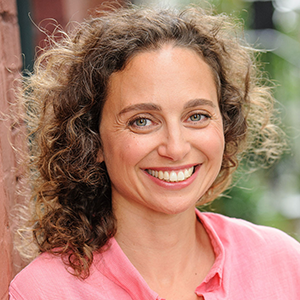LIM 2024 Summer School Program
Wednesday 26 JUNE 2024
9:00-10:30

Geometry of Color Spaces
David Alleysson, Université Grenoble-Alpes (France)
The nature of colors, the way they combine in a mixture and the way we perceived them had been found to be consistent with the notion of vector space. The locus of additive mixture of color, such as in the color space of a computer screen, forms a double pyramid pointing on the origin and included into a cube. This volume resumes to a triangle surface when cut by a chromaticity plane. By contrast, the physiological spectrum locus measured on human observer by color matching experiment forms rather a circular cone truncated by a plane, the purple plane. This volume resumes to a truncated circular surface when cut by a chromaticity plane. Another color space is the perceptual space, less well characterized, but having some interesting properties such as color constancy and is likely perfectly circular when cut by a chromaticity plane. The objective of the course is to give the attendees an intuitive notion of these different geometry for physical, physiological and perceptual spaces, no prerequisites is needed.
Break
11:00-12:30

Understanding Color and the In-Camera Image Processing Pipeline
Michael Brown, York University (Canada)
This short course offers a comprehensive overview of modern digital cameras in two parts. The first part covers color theory and color representations. It also explains the image signal processing (ISP) routines used in cameras to convert raw RGB sensor data to standard RGB (sRGB) colors. These ISP routines include auto white balance, colorimetric conversion, demosaicing, denoising, tone-mapping, super-resolution, and general color manipulation.
Lunch BreAk
14:00-15:30

Image Formation in Scattering Media
Derya Akkaynak, University of Haifa (Israel)
Image formation in a scattering medium is governed by a different and more complex equation than image formation in clear air. This complexity arises from two key differences: the necessity to account for the distance light travels and the optical properties of the medium. In this short course we will: 1) study the differences between the two models and discuss when and where those differences matter (e.g., what happens when you do photofinishing on an underwater image?), 2) understand the RGB coefficients governing image formation in cases of wavelength-dependent and -independent attenuation, and their relationship to coefficients in the real world (e.g., of the many, which physical attenuation coefficient governs color distortions in underwater images?), 3) investigate how to translate RGB coefficients from one camera's color space to another.
Break
16:00-17:30

Improving Color Photos: Deep Learning for In-Camera and Post-Capture Enhancement and Restoration
Javier Vasquez Corral, Universitat Autònoma de Barcelona (Spain)
This course will start with analyzing the various steps in the color camera imaging pipeline, providing a comprehensive understanding of the whole in-camera color processing. We will then explore the integration of deep learning algorithms within this pipeline. Finally, we will examine post-capture deep learning techniques designed to enhance the color of already captured images.